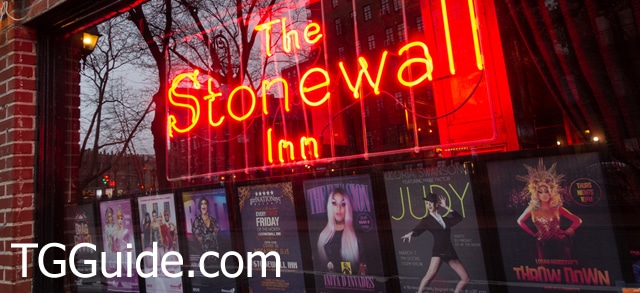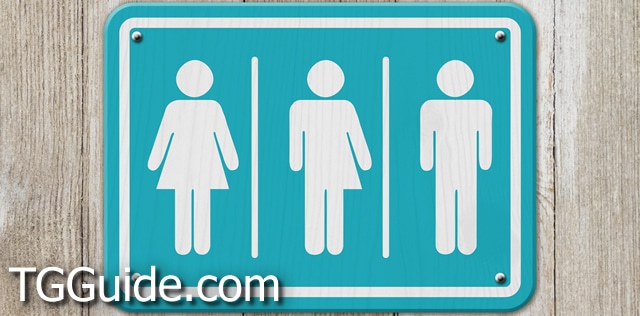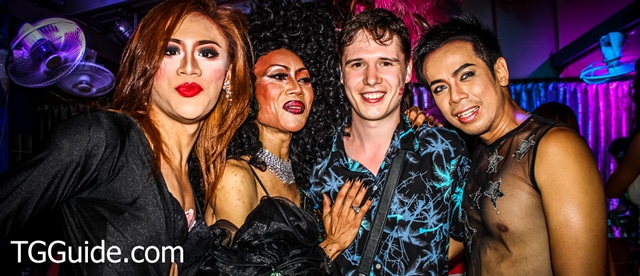Tips for Trans-Inclusive Clubs
We provide tips for trans-inclusive clubs and bars that want to welcome the transgender community into their establishments. The transgender community has historically been an underserved community. Smart business owners realize that not only is this the right thing to do but welcoming the transgender community is great for business! So, what can LGBTQ bars and nightclubs do to welcome transgender patrons?
LGBTQ bars and nightclubs play an important role in providing safe and inclusive spaces for the LGBTQ community, including transgender patrons. However, discrimination and marginalization of transgender individuals within these spaces remain a problem. In order to create truly inclusive and welcoming spaces for transgender patrons, there are several steps that LGBTQ bars and nightclubs can take.
View the TGGuide Trans-Inclusive Clubs Directory. Want to be listed in our directory? Simply agree to the principles contained in this guide for trans-inclusive clubs and bars and contact us or comment below.
Educate Staff and Patrons About Transgender Issues
Creating a trans-inclusive space, especially for a nightclub or bar, requires a commitment to educating both staff and customers about transgender issues. This education can take many forms, from providing training for staff members to hosting events and workshops for trans customers. One important step in educating staff members is to provide training on transgender issues. This training should cover a range of topics.
Trans-Inclusive Training Topics
- The basics of transgender identities and experiences
- The importance of using correct pronouns and names
- Strategies for creating a welcoming and safe environment for trans customers
- Potential risks that transgender individuals may face, such as harassment or violence
- Training and resources to respond effectively to trans harassment or violence
Educating Customers
It is also important to educate customers about transgender issues. This can be done by providing informational materials and resources that customers can access at the club. Hosting workshops or events that feature transgender speakers and performers is a great way to promote trans awareness. For example, an LGBT nightclub could host a workshop on the importance of using correct pronouns.
Create a Trans-Inclusive Space
Creating a trans-inclusive space requires actively promoting transgender visibility and representation. This can be done by promoting transgender performers and artists. Club management should strive to create a space that is equally welcoming and inclusive for transgender customers. This can be accomplished by having gender-neutral bathrooms, providing a safe space for transgender customers and staff, and promoting the diversity of the trans community.
An important aspect of creating a trans-inclusive space is to have a zero-tolerance policy for discrimination, harassment or violence. This can include clearly communicating the policy to all staff members and customers, and taking immediate action in response to any incidents of discrimination or harassment.
Keep in mind that creating a trans-inclusive space is an ongoing process, and requires continuous attention. It is important to remain open to feedback. Be willing to make changes and adjustments as necessary, and continue to educate and engage with staff members and customers about transgender issues.
Provide Gender Neutral Bathrooms
Creating a trans-inclusive space within a nightclub requires a commitment to addressing the unique needs and experiences of transgender individuals. One important aspect of this is ensuring that restroom facilities are inclusive and accommodating for all patrons, regardless of their gender identity.
One way to achieve this is by providing gender-neutral restrooms. Gender-neutral restrooms are those that are not designated as exclusively for men or women, and can be used by individuals of any gender. This is an important step in creating a safe and inclusive environment for transgender individuals, who may not feel comfortable using restrooms designated for a gender with which they do not identify.
It is also important to ensure that all restroom facilities are well-maintained and kept clean. This includes providing adequate supplies such as toilet paper, paper towels, and soap, as well as ensuring that the restrooms are regularly cleaned and sanitized. This is important for all patrons, including those who are transgender, as many transgender individuals may be particularly sensitive to unsanitary conditions.
In addition to these steps, it is also important to provide staff members with training on how to respond to any incidents of discrimination or harassment that may occur within the restroom facilities. This may include providing staff members with information on how to support transgender individuals, as well as strategies for addressing incidents of discrimination or harassment.
Transgender Policies and Practices
Trans inclusivity requires a commitment to developing and implementing policies and practices specifically designed to address the needs and experiences of transgender individuals. This can include a wide range of actions, from providing staff training to implementing specific policies and guidelines that promote the safety and inclusion of transgender individuals.
Create a Non-Discrimination Policy
An important step in creating a trans-inclusive space is to develop and implement a comprehensive non-discrimination policy. This policy should clearly outline the rights and protections that are afforded to all individuals, regardless of their gender identity or expression. This can include language that prohibits discrimination on the basis of gender identity or expression in all aspects of the nightclub’s operations, including hiring, promotion, and provision of services.
As mentioned earlier, an important aspect of creating a trans-inclusive space is to provide training for staff members on transgender issues. This training should cover the basics of transgender identities and experiences, the importance of using correct pronouns and names, and strategies for creating a welcoming and safe environment for transgender customers. Staff members should also be educated about the potential risks that transgender individuals may face, such as harassment or violence, and should be equipped with the tools and resources to respond effectively to such situations.
Guidelines for Self-Identification, Names and Pronouns
It is important to establish clear guidelines for the use of restrooms. These guidelines should be based on the principle of self-identification, allowing individuals to use the facilities that correspond to their gender identity.
Another important step in creating a trans-inclusive space is to establish clear guidelines for the use of names and pronouns. This can include providing staff members with training on the importance of using correct names and pronouns, and implementing procedures that allow customers to specify their preferred names and pronouns when they check in or register. This can be done by creating a form to be filled out at the time of registration, or by having a conversation with the customer.
Addressing Transgender Discrimination, Harassment or Violence
It is important to establish a clear process for addressing incidents of discrimination, harassment, or violence against transgender individuals. This can include providing staff members with training on how to respond to incidents of discrimination or harassment, and implementing a zero-tolerance policy for violations of this policy. This can include providing a safe space for customers and staff that have been harassed or discriminated against.
Host Transgender Events and Programs
Creating a trans-inclusive space within a nightclub or bar includes a commitment to hosting events and programs that specifically cater to the needs and experiences of transgender individuals. This can include events such as workshops and educational programs, performances and social events. A great way to advocate for the transgender community is by hosting social events specifically for transgender people. These can include meet-ups, networking events, or support groups that provide a safe and inclusive space for transgender people to connect with one another and discuss shared experiences.
Host Transgender Workshops and Programs
Workshops and educational programs that focus on transgender issues. These can include workshops on topics such as the basics of transgender identities and experiences, the importance of using correct pronouns and names, and strategies for creating a welcoming and safe environment for transgender customers. These workshops can be led by experts in the field, such as transgender activists, educators, or healthcare professionals.
Host Transgender Events and Performances
Hosting events and performances by transgender artists and performers is a great way to promote the visibility and representation of transgender individuals. This can include music performances, poetry readings, or stand-up comedy shows featuring transgender artists and performers. This promotes the trans community while providing a platform for the artists to showcase their talents and creativity.
It is important to ensure that all events and programs are inclusive and welcoming to transgender individuals of all ages, races, ethnicities, abilities and socio-economic backgrounds. This can be achieved by actively promoting diversity and inclusivity within the event and programs, and by ensuring that all events and programs are open and accessible to all individuals, regardless of their gender identity or expression.
Trans-Inclusive Marketing and Advertising
Creating trans-inclusive marketing and advertising can include a wide range of actions, from the use of inclusive language and imagery in advertising materials to seeking out and promoting transgender performers and artists.
Best practices include using gender-neutral language and avoiding gendered terms or stereotypes when describing customers or performers. This can also include using images that reflect the diversity of the transgender community, rather than relying on stereotypes or cliches. This can be achieved by including photographs of trans people of different races, ethnicities, abilities and socio-economic backgrounds. Remember that all marketing and advertising materials should be inclusive and welcoming to transgender individuals of all (legal) ages, races, ethnicities, abilities and socio-economic backgrounds.
Solicit Feedback From Your Transgender Customers
Actively engage with the trans community and listen to their feedback. This can be done by creating a feedback form or holding focus groups where trans individuals can provide input on the marketing and advertising materials. This is an important step in ensuring that the materials accurately represent the trans community and cater to their needs.
Be aware of the cultural context and the current trans rights movement, and ensure that all marketing and advertising materials are respectful and not offensive towards trans individuals. This can include avoiding using derogatory language or imagery, and avoiding using trans identities or experiences as a way to gain attention or boost business.
Conclusion
In summary, LGBTQ bars and nightclubs have an important role to play in creating safe and inclusive spaces for transgender patrons. By educating staff and patrons, providing gender-neutral bathrooms, creating safer spaces, hosting events and programs that celebrate and promote the transgender community, being inclusive in the establishment’s environment, and inclusive marketing and advertising efforts, LGBTQ bars and nightclubs can help to create truly inclusive and welcoming spaces for their transgender patrons. It is good for business and it truly is a win-win proposition!




